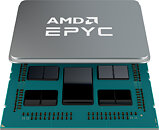BOOX Palma Mobile ePaper Ideal for Productivity on the Move
During your commute, do you find yourself grabbing the subway handle, half-awake, or idly gazing at the roadside shops? Perhaps you pass the time scrolling on your phone until you reach your destination station. Whether it's a 15-minute bus ride or a half-hour subway journey, commuting often feels like a less-than-ideal use of time. However, with all these minutes adding up, the time spent is significant. How to make the tedious journey productive? BOOX Palma has the solution.
Petite & Light: Bustling Commutes, Easy Moves
When a time-killer is needed on the go, some people opt for a book. However, flipping through a book becomes a real challenge in a packed carriage with no available seats, and people constantly getting on and off. Not to mention, sometimes you need a free hand to grab onto something for balance. An e-reader may be a better choice. But navigating a typical tablet-sized e-reader with your thumb is not always convenient, and holding it for an extended period may strain your wrist. To deal with all these inconveniences, BOOX Palma is here to help. The petite gadget is the smallest in the BOOX lineup. As its name suggests, this 6.13" mobile ePaper fits your palm, weighing just half as much as a common paperback book. Running on an Android system, it offers a familiar user experience with quick tapping and swiping. During multiple transfers, you can easily slip it in and out of your pocket—no more disruptions to your pace in the urban bustle.
Petite & Light: Bustling Commutes, Easy Moves
When a time-killer is needed on the go, some people opt for a book. However, flipping through a book becomes a real challenge in a packed carriage with no available seats, and people constantly getting on and off. Not to mention, sometimes you need a free hand to grab onto something for balance. An e-reader may be a better choice. But navigating a typical tablet-sized e-reader with your thumb is not always convenient, and holding it for an extended period may strain your wrist. To deal with all these inconveniences, BOOX Palma is here to help. The petite gadget is the smallest in the BOOX lineup. As its name suggests, this 6.13" mobile ePaper fits your palm, weighing just half as much as a common paperback book. Running on an Android system, it offers a familiar user experience with quick tapping and swiping. During multiple transfers, you can easily slip it in and out of your pocket—no more disruptions to your pace in the urban bustle.


































